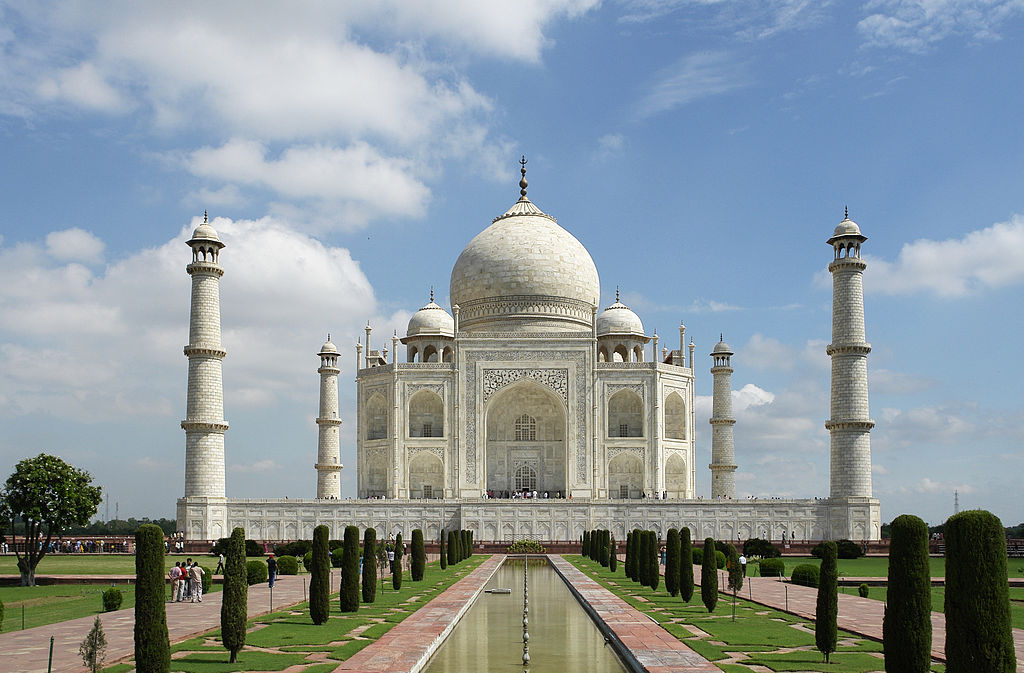
written by Ashutosh, Senior Leader & National spokesperson of Aam Aadmi Party
Ideological schizophrenia and a perverse reading of history projects the Taj Mahal as a symbol of hate and barbarism.
Leo Tolstoy has a very interesting take on history and historians. He says, “Historians are like deaf people who go on answering questions that no one has asked them.” I wish I could say that BJP leaders Sangeet Som and Vinay Katiyar are historians and deaf. But the truth is that they are asking a question which is showcasing a festering wound of contemporary Indian politics.
Questions about the Taj Mahal are not isolated incidents, but a reflection of deeper ideological pathology. They emanate from the psyche of revenge. Though Som and Katiyar seem like protagonists of this debate, the real driver is the ideology articulated by the RSS and the likes of Vinayak Damodar Savarkar. This ideology floats a basis to view many monuments of the last thousand years with suspicion.
Savarkar said India was an old civilisation that faced and lived with many invaders like Greeks, Shakas, Hunas, Muslims, and the British. But he quarrels only with the Muslims and the British: “Earlier invaders were political and their motive was to establish a political hegemony in India. Islam was different. It not only wanted to establish an Islamic rule by trampling Hindu rulers but it also had a religious agenda. Pre-Islamic invaders did not have a religious agenda unlike Muslims. Muslims had a sinister design. Political motive was subordinated to the religious goal. They wanted to finish Hindu religion, the national life line of this country.”
For him, medieval history is a period of religious war. And today, if Hindus have to survive they must stay united and history must be re-written to foster Hindu pride.
M. S. Golwalkar, the second Sarsanghchalak of the RSS, was much inspired by him. But he also added the theory of assimilation. He writes in “Bunch of Thoughts”: “The invaders such as Greeks, Hunas, and Shakas who came previously were either defeated and driven out or, if some of them stayed over, were absorbed in the Hindu society. But the invaders who came during the last ten or twelve centuries could not be driven out. They could not be absorbed either. They remained a separate entity. And ruled as foreigners in this land.”
For Savarkar and Golwalkar, the test of nationalism is if you can locate in this soil both your Pitri Bhumi (fatherland) and Punya Bhumi (sacred land). They believed the Muslims can never be loyal to this country as India is not their Punya Bhumi.
Taj Mahal was erected by a Muslim ruler, Shahjahan, in memory of his beloved wife Mumtaz Begum. For the world and a majority of Indians, it is a mausoleum of love, a living wonder of the world, a marvel, a great attraction for the other civilisations, and a symbol of the Indian nation. The Taj Mahal is to India what the Statue of Liberty is to America or the Eiffel Tower is to France. But ideological schizophrenia and a perverse reading of history projects it as a symbol of hate and barbarism.
It is not a coincidence that what Som said was echoed by the BJP spokesperson G.V.L. Narasimha Rao who, instead of condemning him declared, “as far as Muslim, Mughal rule in this country is concerned, that period can only be described as exploitative, barbaric, and a period of incomparable intolerance which harmed Indian civilisation.”
Though the compulsions of being in office forced CM Yogi Adityanath to moderate his views this time, he had said in a TV interview in February this year that the name of Taj Mahal should be changed to Ram Mahal. In fact, writers like P. N. Oak have been advocating for a long time that Taj Mahal is constructed on the ruins of Shiv Temple, called Tejo Mahalaya.
Therefore, the controversy around Taj Mahal is the extension of an ideological war. Changing the name of Aurangzeb Road to A.P.J. Abdul Kalam Road and blackening of signage on Akbar Road are reflections of the same mindset. It is this mindset, which decides that in the battle of Haldi Ghati it was Rana Pratap not Akbar who emerged victorious.
In the glorification of the Mughal Empire, the RSS smells a conspiracy, woven by the British in the past to keep Hindus bereft of any self-respect so that the British empire could continue for eternity.
Golwalkar writes: “It was deliberately projected that entire history of our country thus was comprised of dark ages at the start and later portion was divided into Muslim and British periods … so that our people should believe that we had no national life and nothing great whatsoever.”
In the RSS view, history rewriting is an exercise in reawakening, revitalising the core of Indian nationhood, which they describe as Hindu in character. So, the war will continue. Today it is the Taj Mahal, tomorrow it will be some other monument.
written by Ashutosh, Senior Leader & National spokesperson of Aam Aadmi Party
https://theprint.in/2017/10/18/taj-mahal-controversy-extension-rss-ideological-war/


2 Comments